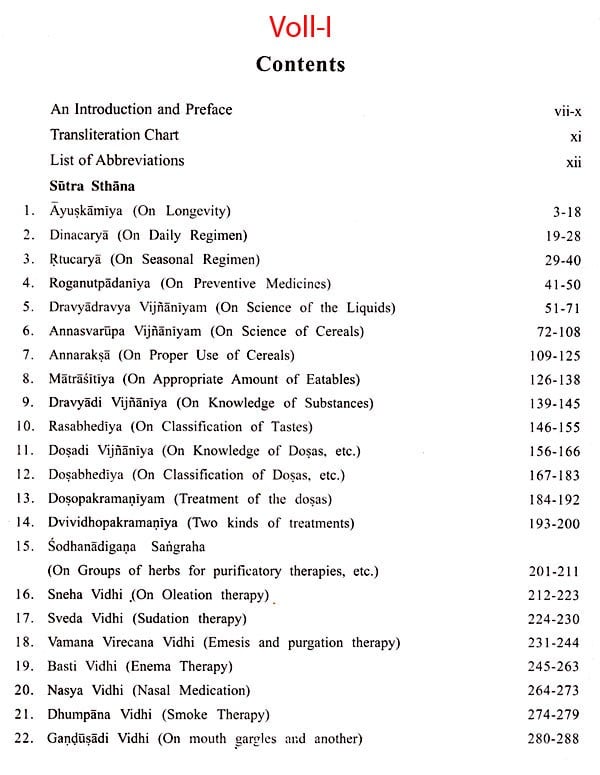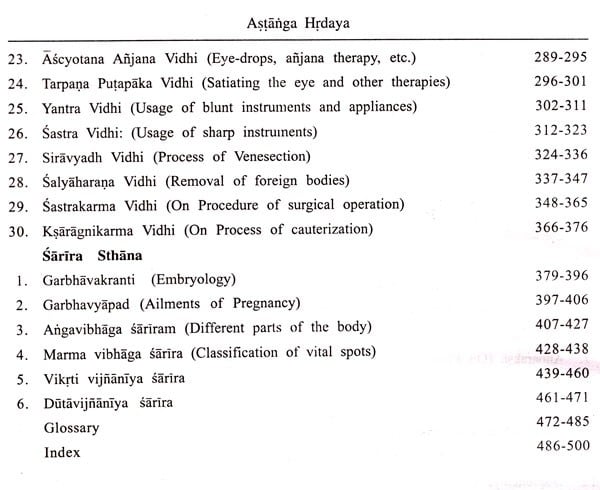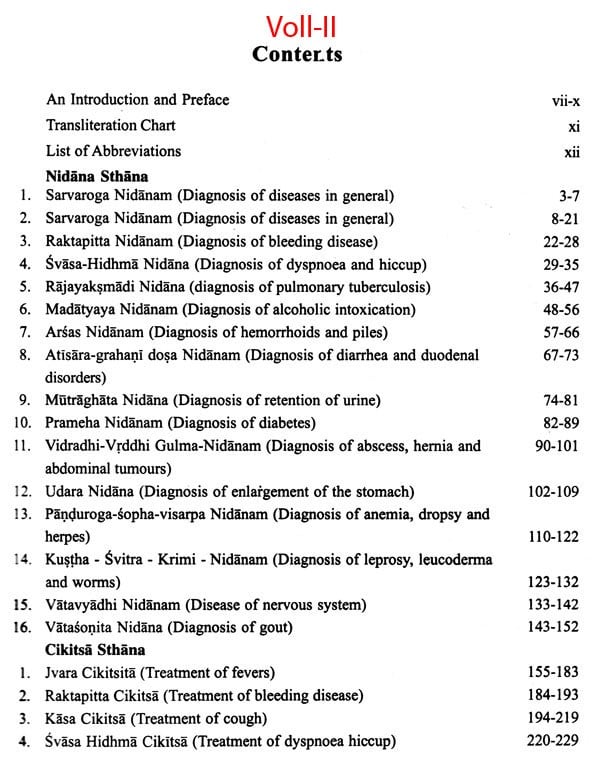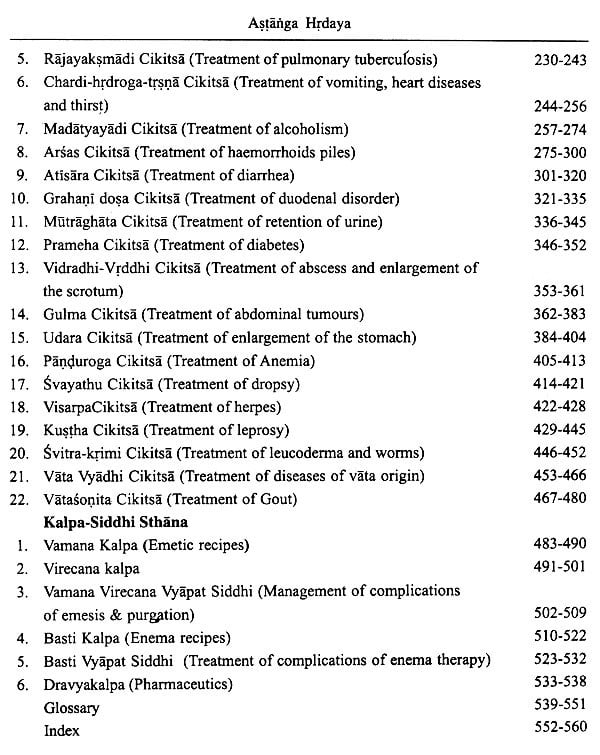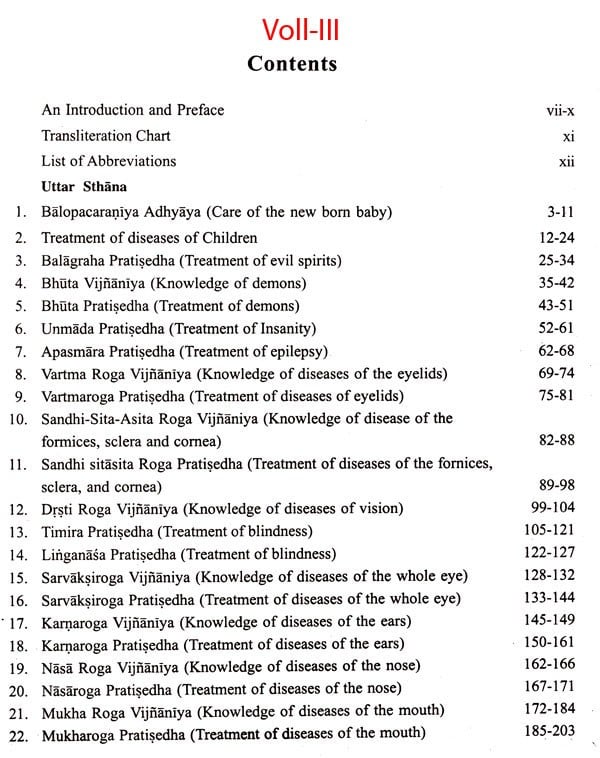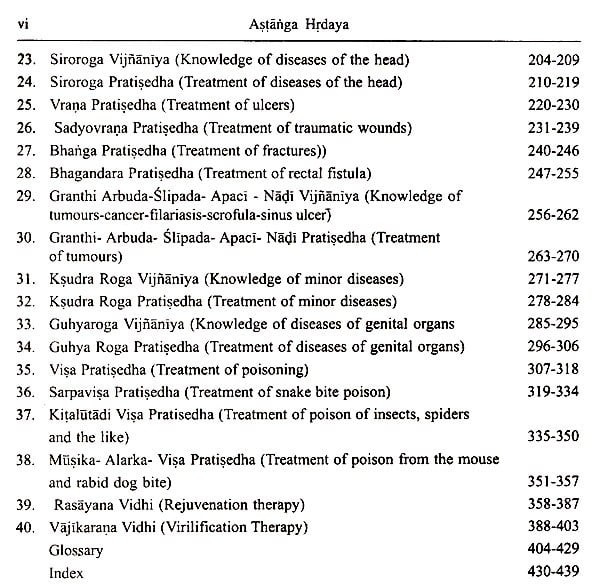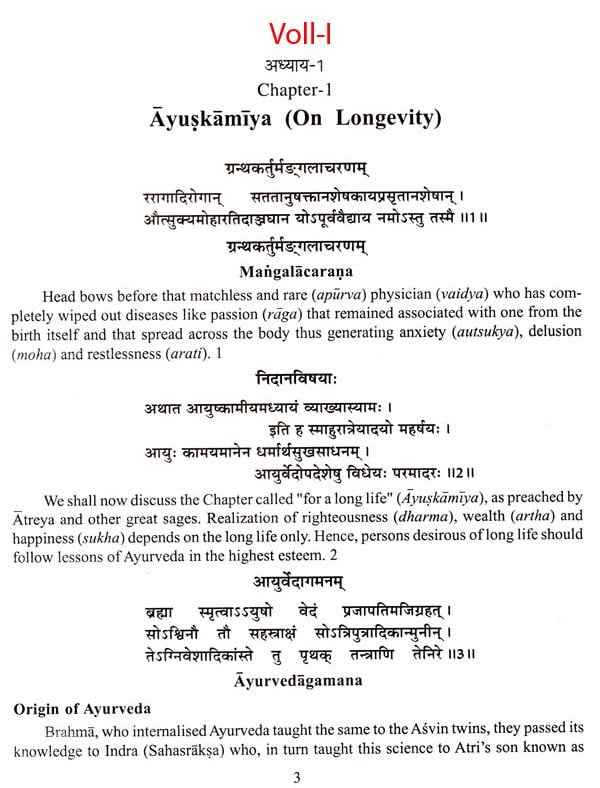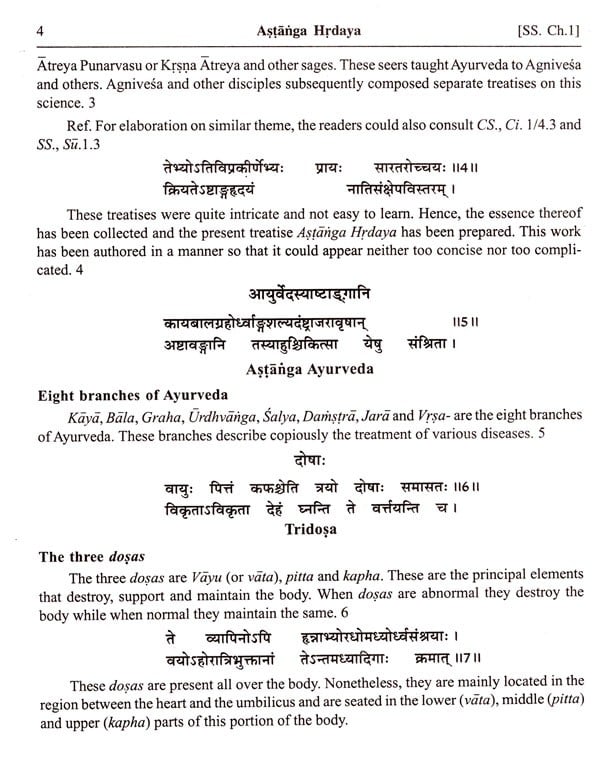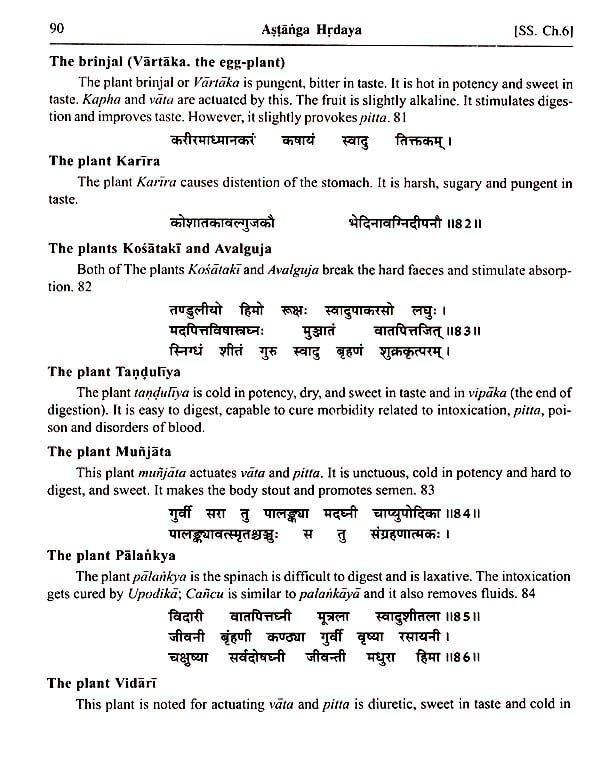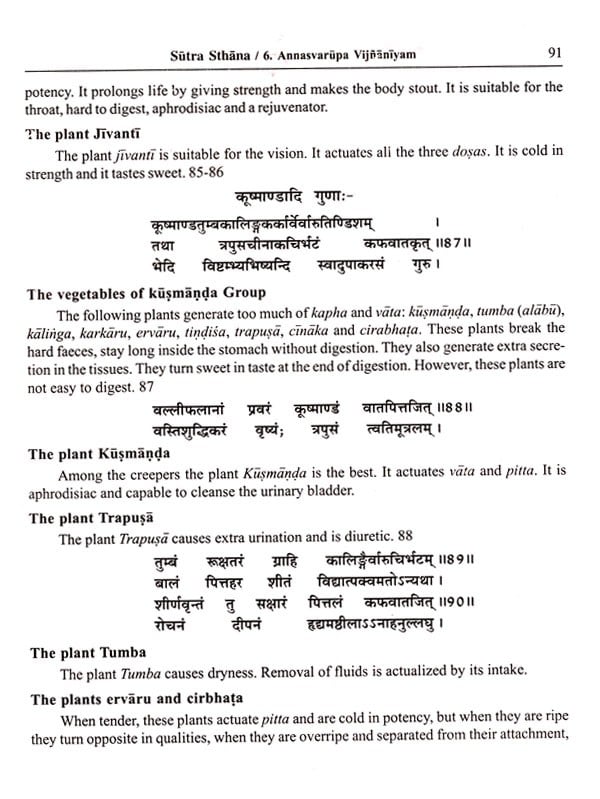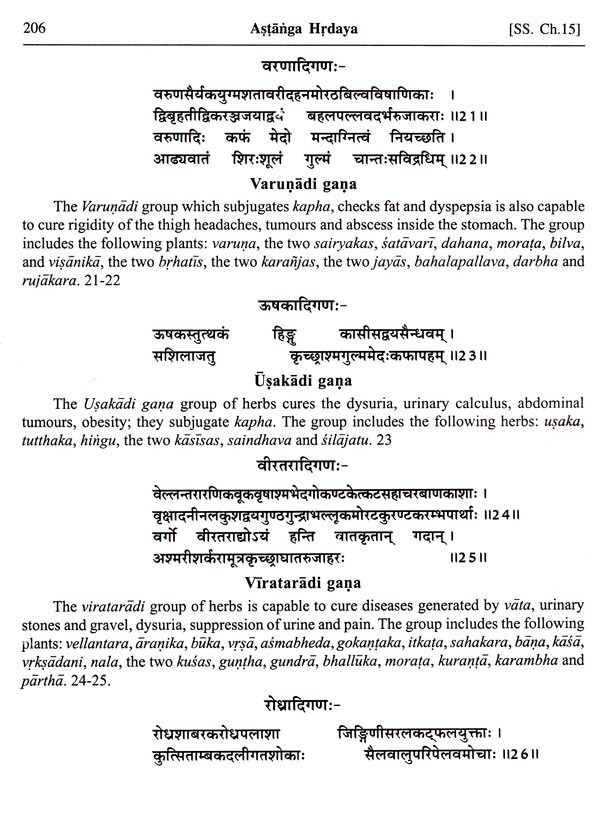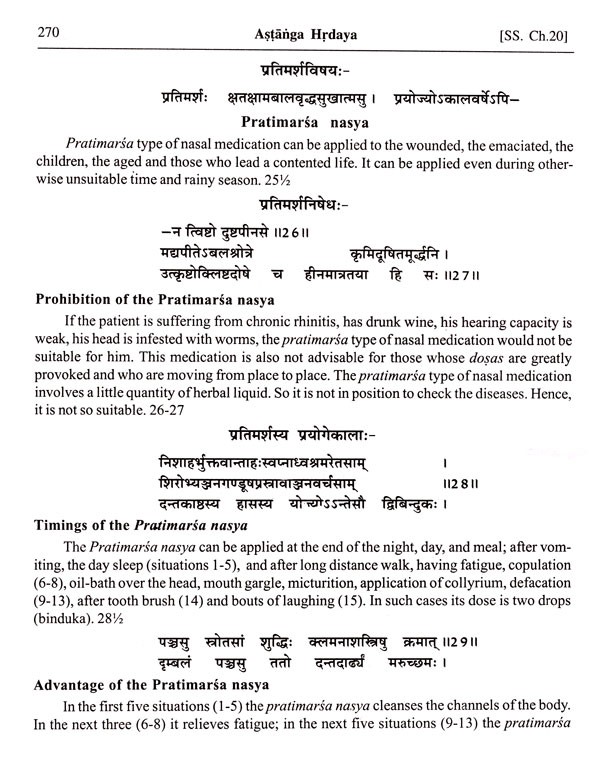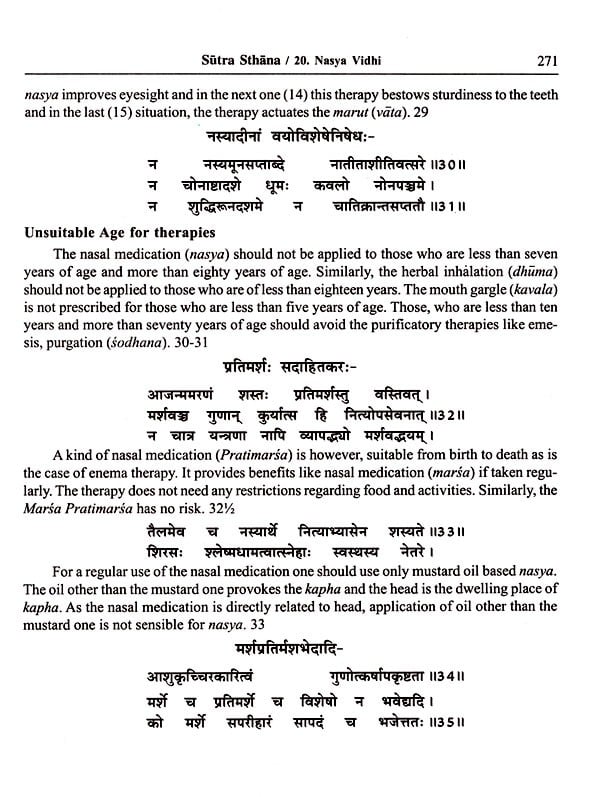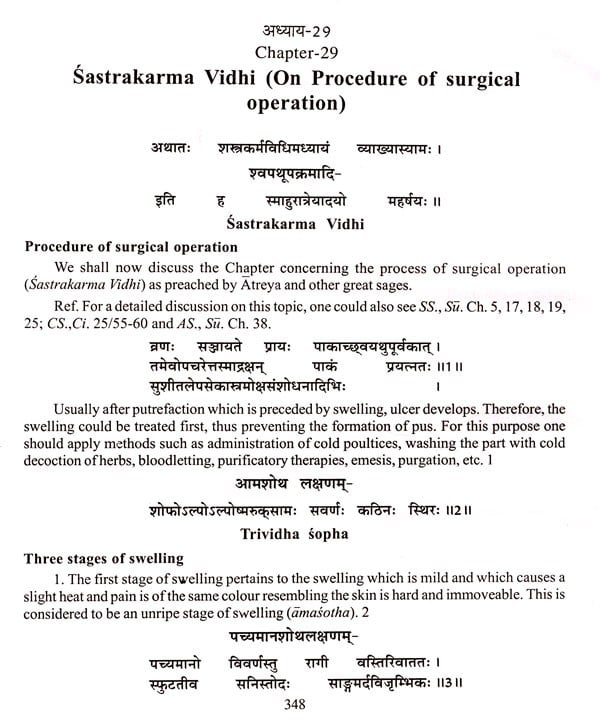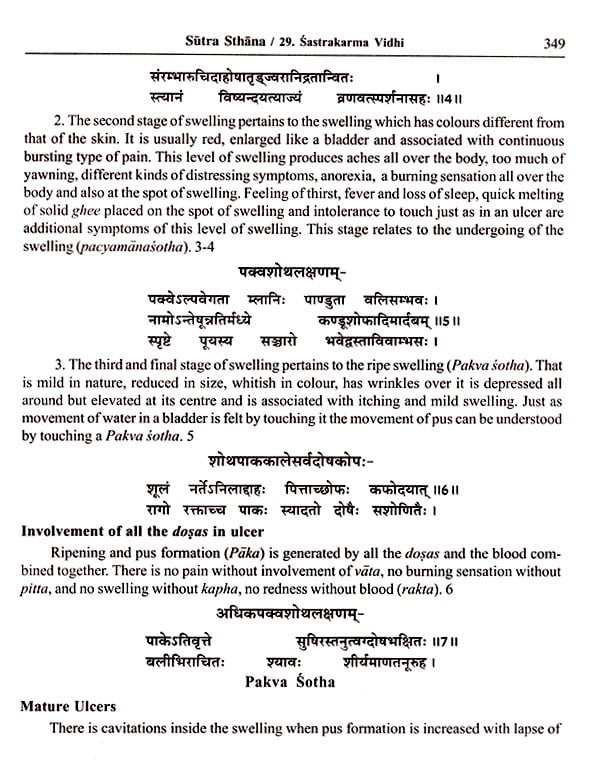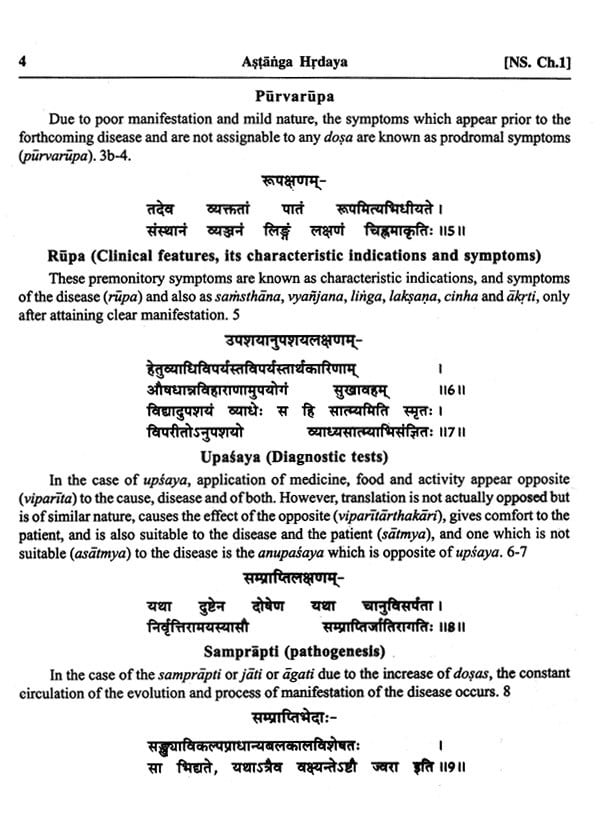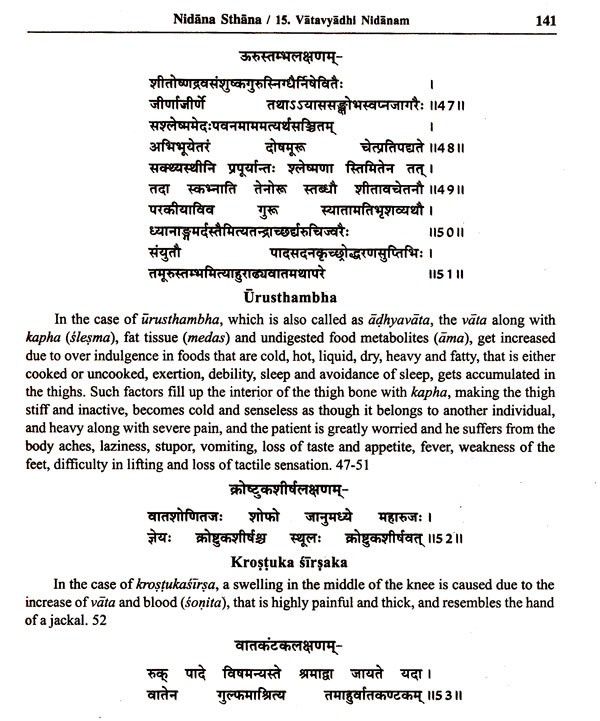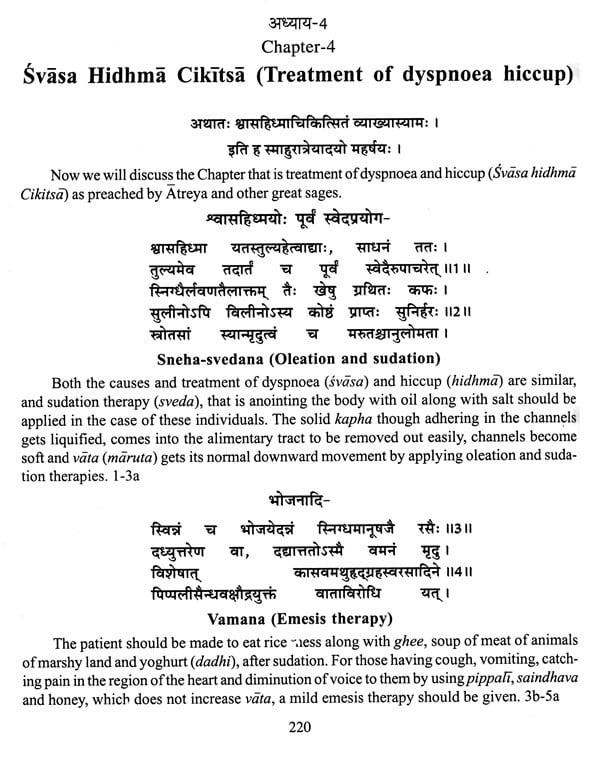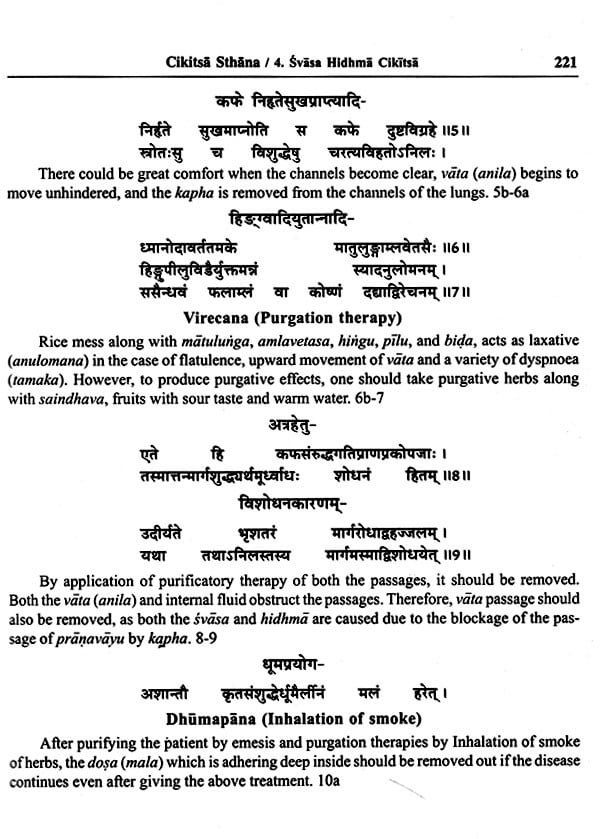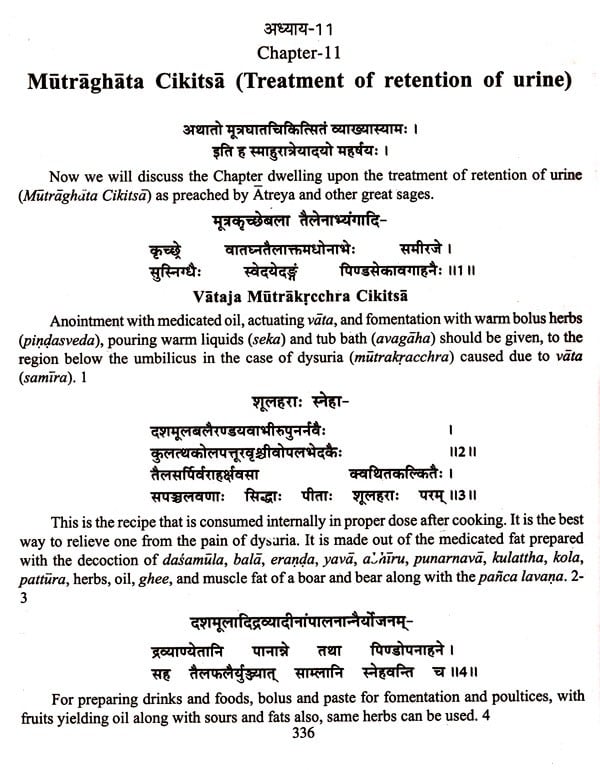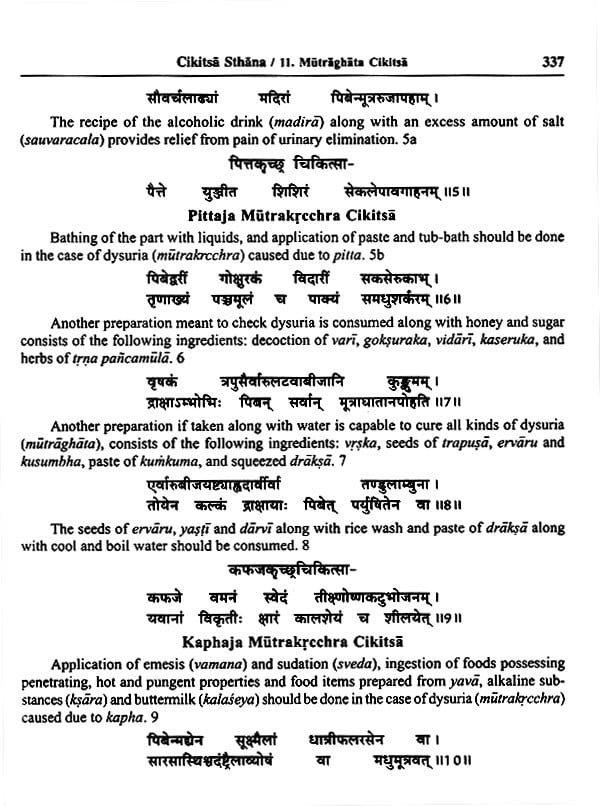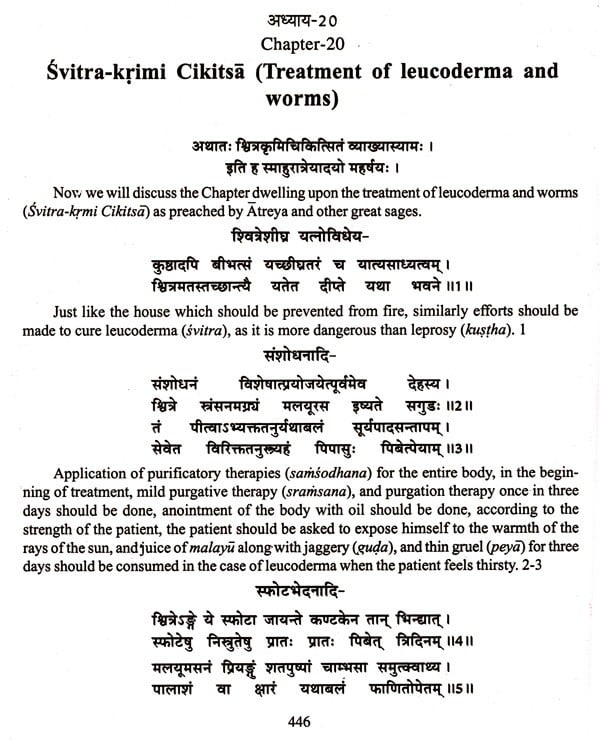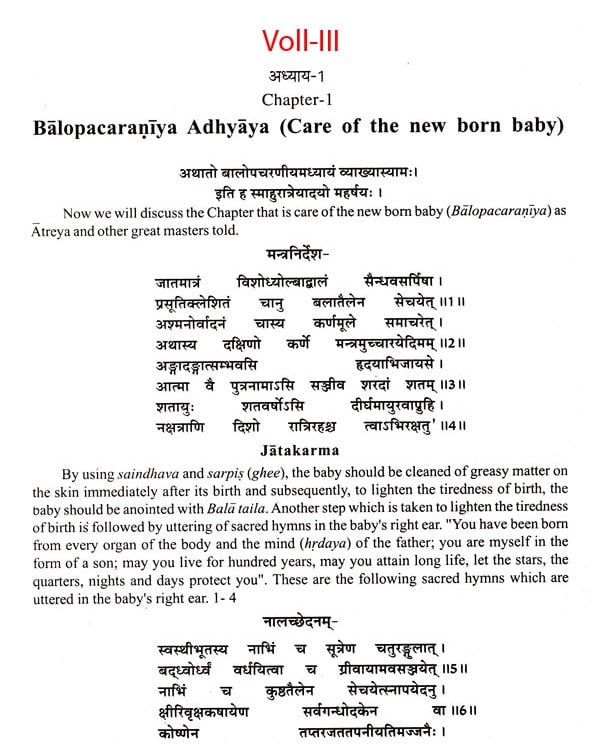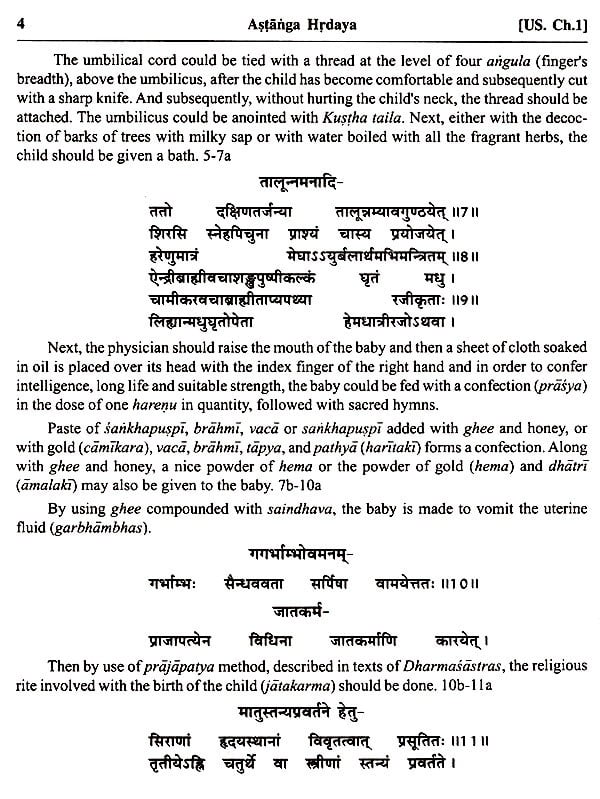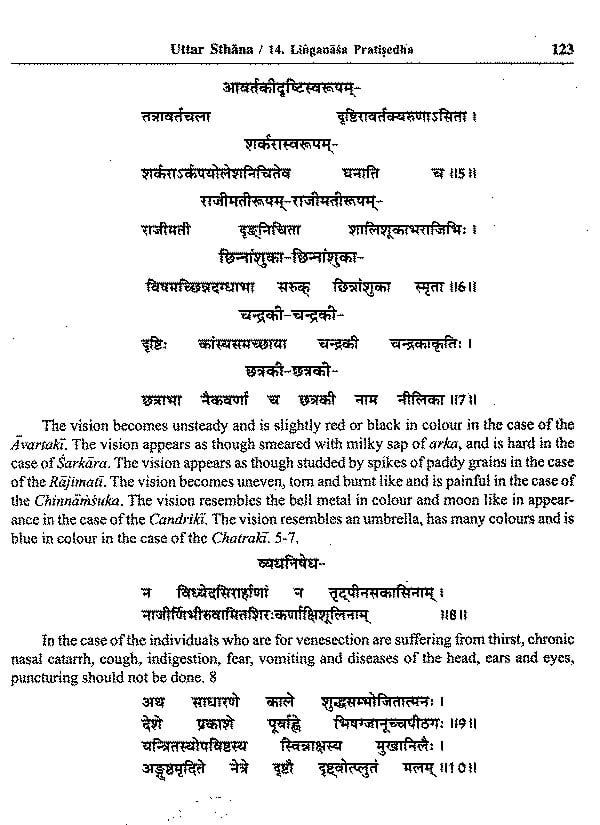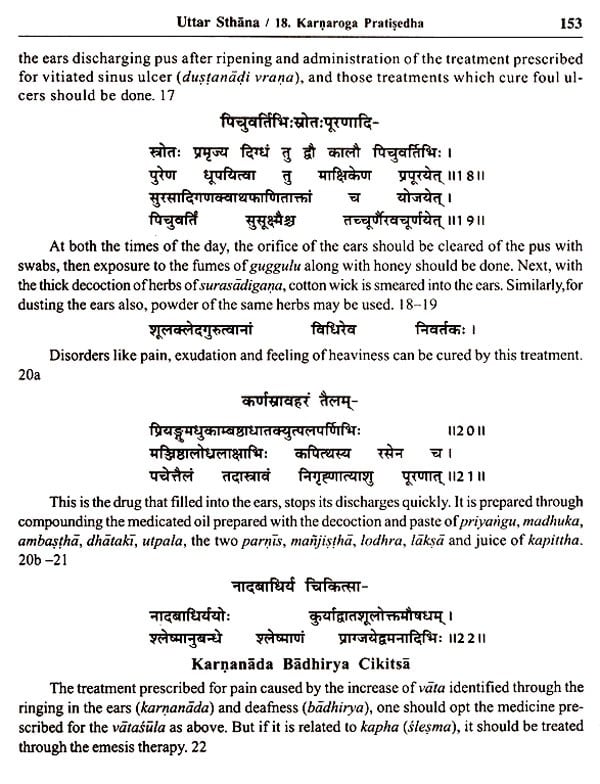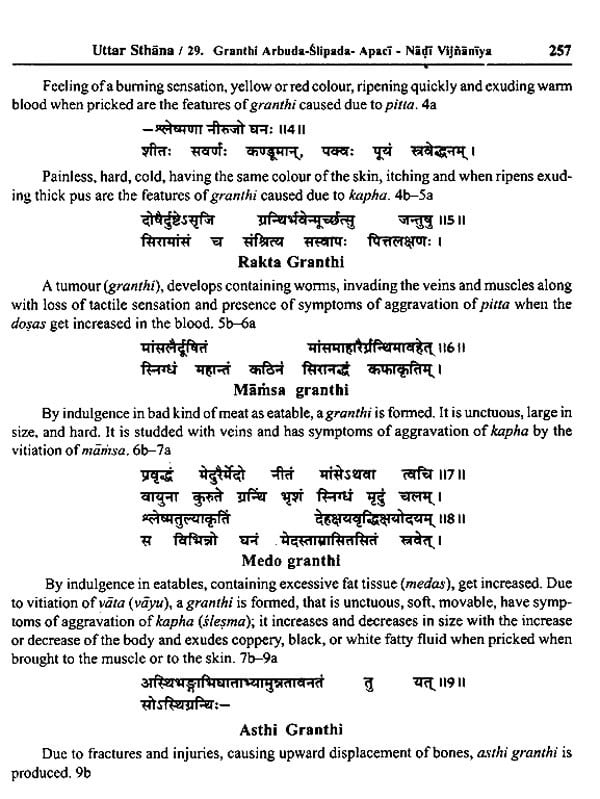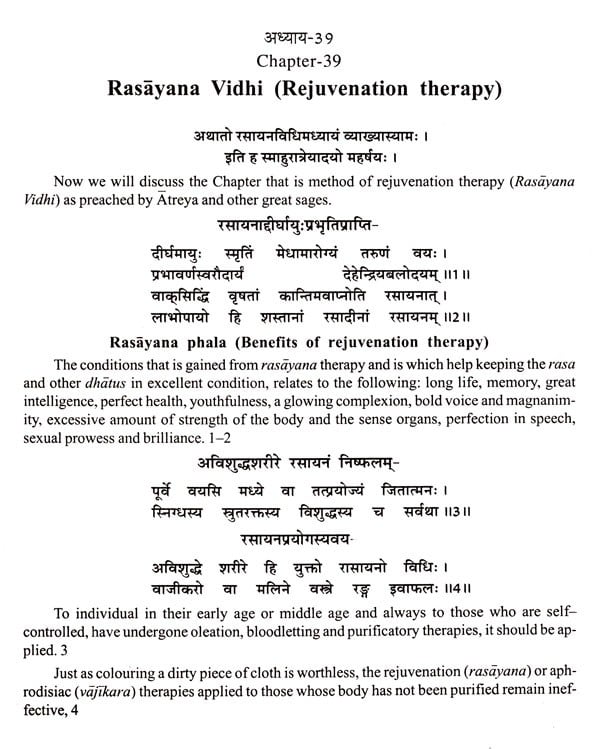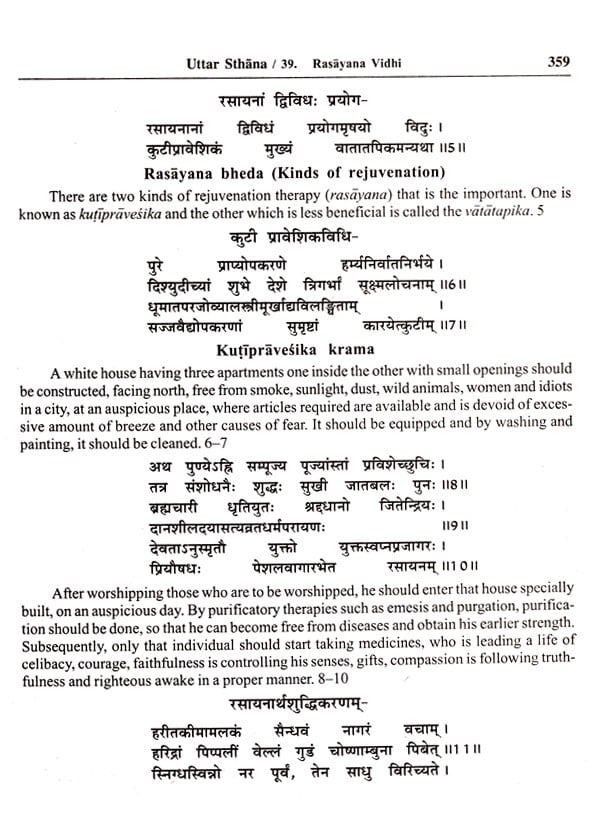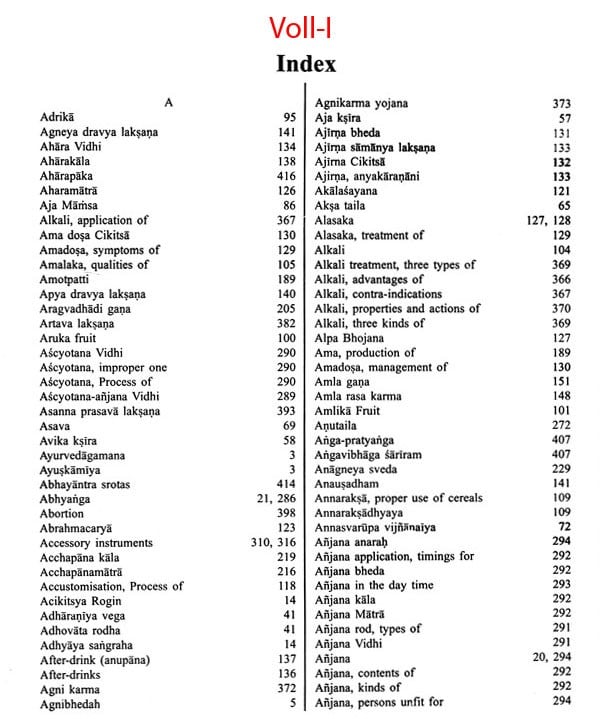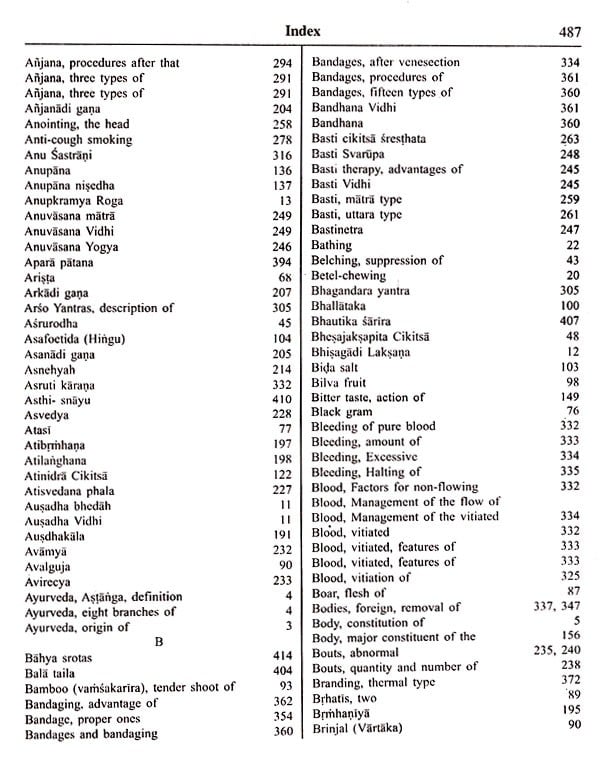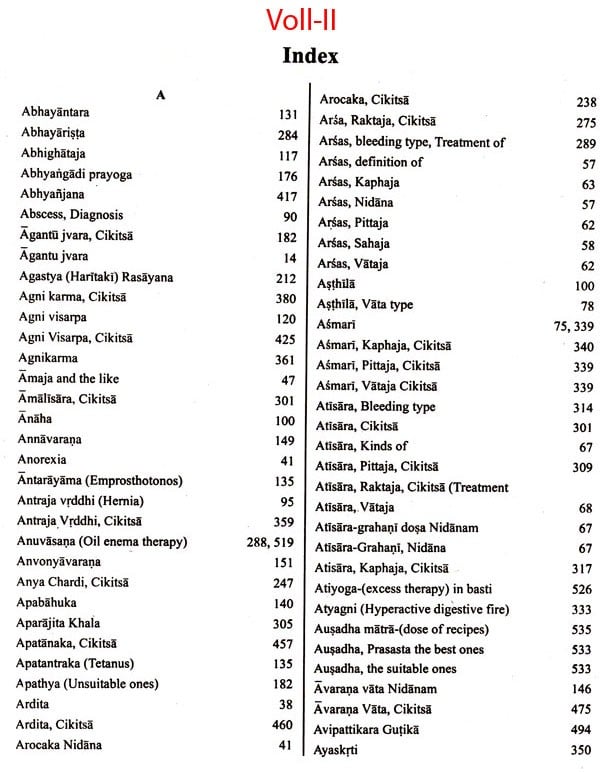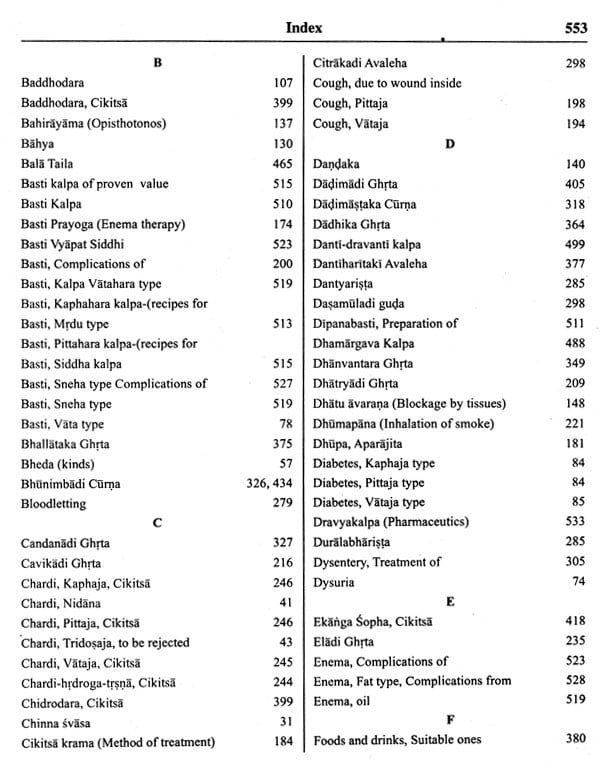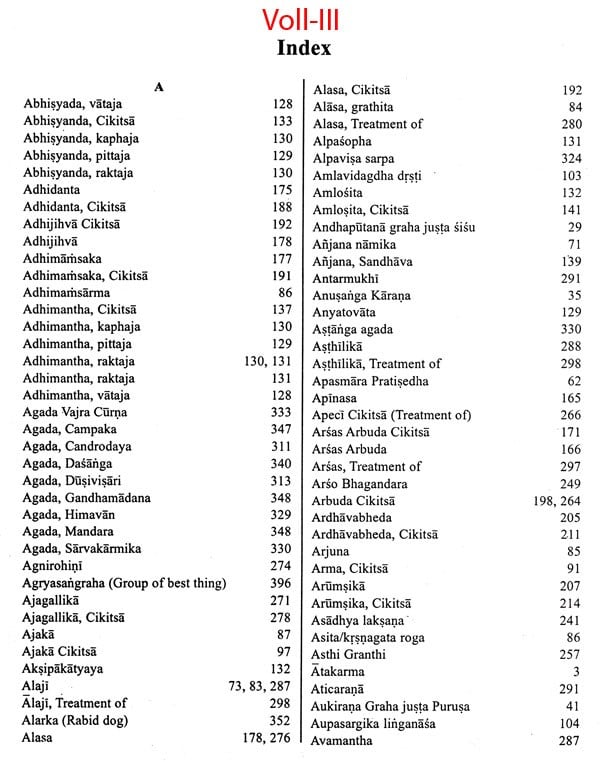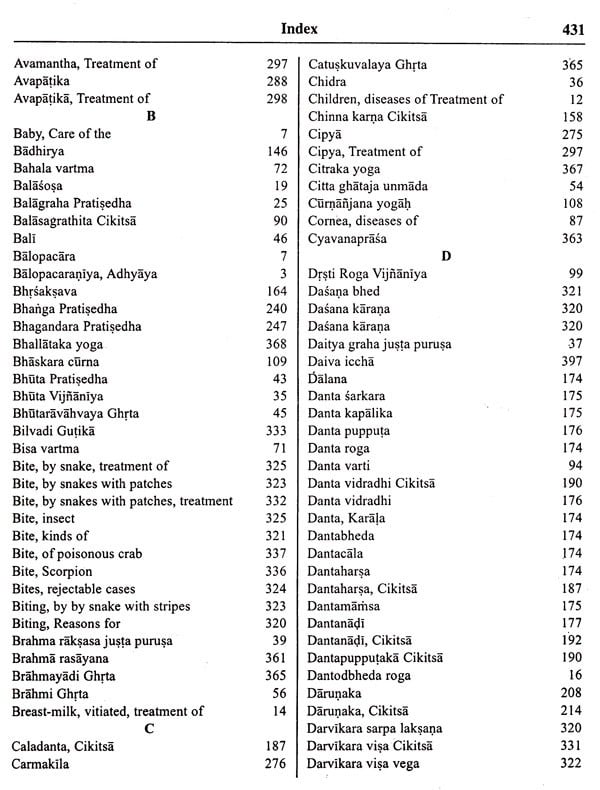
Astanga Hridaya of Vagbhata (Set of 3 Volumes)
Book Specification
| Item Code: | NBZ239 |
| Author: | Kanjiv Lochan |
| Publisher: | Chaukhambha Publications |
| Language: | Sanskrit Text with English Translation |
| Edition: | 2019 |
| ISBN: | 9789381608906 |
| Pages: | 1548 |
| Cover: | HARDCOVER |
| Other Details | 9.90 X 7.50 inch |
| Weight | 2.84 kg |
Book Description
The 'Ashtanga Hridaya', literally 'the core of the Octopartite Science, i. e. Ayurveda', is a significant text on the subject.
Ranked at par with the texts of Charaka and Sushruta, the work has traditionally been included among the Great Triad or Brihat Trayi of the Ayurveda.
This work consists of the basics of the teaching and preaching contained in the texts of ancient Ayurvedic theorists including Agnivesha, Atreya, Charaka and Sushruta, Bhela, and Harita. The originality of the Ashtanga Hridaya is in its crisp and to the point presentation of the theme. The work has as many as 120 chapters distributed through six sections.
In a short space of time, the work rose to great significance and as such a number of commentators laid their hands upon it. As a matter of fact, in terms of commentators, the Ashtanga Hridaya is richer even than the Charaka Text and Sushruta Text. Within 100 year of its appearance, this treatise appeared to have caught the notice and attention of the practitioners and theorists of Ayurveda throughout India, and even beyond.
The Ashtanga Hridaya was translated into Tibetan under the name Rgud Bzi during 755-797 AD. The work was also translated into Arabic and published with the name Astankar during the reign of Khalifa Harun-al-Rashid (786-808 AD). The international popularity of the work is also evident by the fact that the famous Persian physician Ali b. Sahl Rabban al Tabari, who authored Firdaws alHikma fi l-tibb around 850 AD named Ashtanga Hridaya as one of the major works on medicine. The treatise without doubt remained the most popular work on medicine across the world up to the Industrial Revolution.
Kanjiv Lochan has earned Ph. D. on history of Ayurveda and related medicines from the prestigious Centre of Historical Studies, JNU, New Delhi. He was invited as Visiting Scholar by Department of History of Medicine, Cambridge University, UK. He has authored and edited a number of scholarly books on Ayurveda. At present, he is engaged in teaching history in BS College, Lohardaga under Ranchi University, Ranchi, India. He could be reached at kanjivlochan@yahoo.co.in
The ‘Aștanga Hrdaya,' literally “the core of the Octopartite Sciences, i. e. Ayurveda’, is a significant text on the subject. It has been justifyingly included among the Great Triad (Brhat Trayı) of the Ayurveda, thus ranking to the texts of Caraka and Suśruta.
As repeatedly stressed upon by its author Vagbhața, this work consists of the core of the teaching and preaching contained in the texts of ancient Ayurvedic theorists including Agnivesa, Atreya, Caraka and Susruta, Bhela, and Harita. The originality of the Aștanga Hrdaya is in its crisp and to the point presentation of the theme. The work has as many as 120 chapters distributed through six sections. In all, these chapters contain approximately 8,000 verses. The exact counting of the verses or passages therein could not be tendered because the different texts of the work available today vary in this matter. Obviously, there are a number of interpolations to the original writing of the author of Astanga Hrdaya. These passages are, at times, easily identifiable as they are independently numbered and they stand out of the numerical serial given in the original manuscripts.
The work in course of time rose to a great significance and as such a number of commentators laid their hands upon it. As a matter of fact, in terms of commentators, the Astanga Hrdaya is richer even than the Caraka Text and Susruta Text. Within 100 year of its appearance, this treatise appeared to have caught the notice and attention of the practitioners and theorists of Ayurveda across India, and beyond. Earliest commentators of the text include such famous scholars as Candra, Indu, Arunadatta an Bhtta Narahari.
Across border, the Astanga Hrdaya was translated into Tibetan under the name Rgud Bzi during 755-797 AD. The work was also translated into Arabic and published with the name ‘Astankar' during the reign of Khalifa Harun-al-Rashid (773-808 AD). The international popularity of the work is also evident by the fact that a Persian physician who authored Firdaus-al-hikma in 850 AD named Aștanga Hrdya as one of the major works on medicine.
The first print of the work was brought under the supervision of Dr. Anna Moresvara Kunte, MD, of Mumbai in the year 1880. Between 1880 and 1892 as many as 10 editions of the Astanga Hrdaya were published across the British India. In vernacular languages, the work was first published in Sanskrit and Bangla in 1886 by Vijayratna Sen Gupta who added the commentary of Arundatta to the publication. In the year 1889, a Gujarati translation was published by Behichar lal Nathuram, Ahmedabad. The first Hindi translation of the text was brought by Pandit Robi Dutta, Mumbai in the year 1890. The next year, a Marathi translation was published by Ganesh Krsna Garde, Poona.
As suggested above, the authentic version of the Astanga Hrdaya consists of 120 chapters in total, divided into 6 sections, each with varying numbers of chapters as noted below- 1. Sutra Sthana with 30 chapters; 2. Sarira Sthana with 6 chapters; 3. Nidana Sthana with 16 chapters; 4. Cikitsa Sthana with 22 chapters; 5. Kalpasiddhi Sthana with 6 chapters; 6. Uttara Sthana with 40 chapters: Thus 120 chapters in total. The language and style of the composition are simple and easy, the verses are composed in different meters and are aimed at brevity and beauty to be suitable to be learnt ‘by heart and to be kept in memory for a long time.
No introduction to the treatise Aștanga Hrdaya could be concluded without a note on its great author Vagbhața and another work of Ayurveda, the Aștanga Sangraha. It is curious to learn that in terms of the presentation of the subject, titles of the work and names of their authors, both this text and Astanga Hrdaya share a significant commonness. Both of them are believed to have been authored by certain Vagbhata only. The Astanga Sangraha is greater in size (it contains 150 chapters in place of 120) and greater in scope (subjects and details). At first instance, it appears that no scholar would waste time and energy to write more than one book on an identical subject and in an identical pattern.
Some old commentators have also referred to two different Vagbhațas, one the Elder Vagbhata and the other the Junior Vagbhața. On the basis of this scholars have suggested existence of a duo of the grandfather and his grandson!
However, as the authorship in question related to a technical theme (Ayurveda), it is not very significant to debate the details of the authorship of Astanga Sangraha and the Astanga Hrdaya. It matters little if a single individual authored both of these texts or they were composed by two different authors. There are instances as well when a single author has revised and improved his writing during later part of his life. Kalidasa, the great poet transformed his styles between phases of writing the Rtu Saṁhara and the Raghuvassam. Thus it is not theme of import to debate if the Astanga Hrdaya is an improved version of Vagbhata's earlier write-up or it is based on a text authored by his grandfather, who bore an identical name.
**Contents and Sample Pages**
